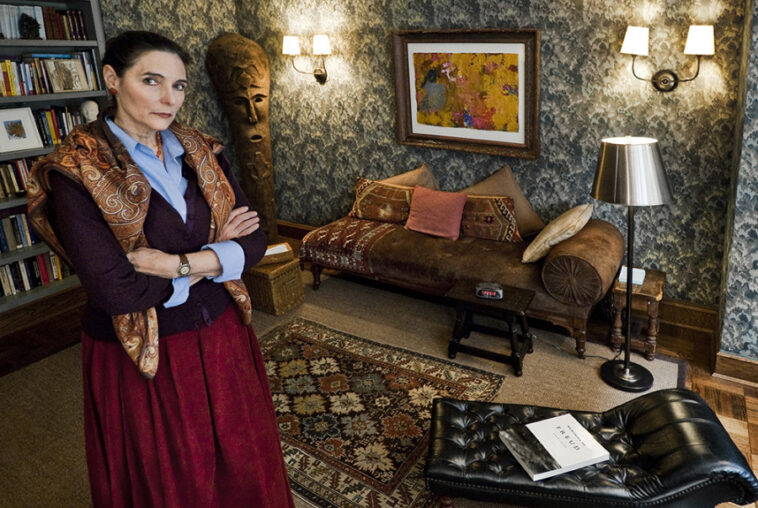If you’re into TV shows, you must’ve watched The Sopranos. If you haven’t, it’s still highly recommended. It’s the perfect example of how something fictional can intrigue a series of emotions in our minds. And of course, the dynamic between Dr. Jennifer Melfi and Tony Sopranos is iconic. It’s the best depiction of how impactful therapy can be in the history of television. At least, in our humble opinion.
If you ever wonder what is therapy like or what happens in therapy, the show offers generic insights into that. However, real life is not fiction. So, let’s explore what a therapy session looks like in a big city like New York.
The First Phase: Intake and Assessment

We’re assuming you’ve already figured out how to find the right therapist for your needs. So, we’re starting from the first encounter. It doesn’t matter if the session is in the therapist’s office or over the Internet, considering the widespread popularity of online therapy these days.
After the brief introduction, you’ll provide information about your background, experiences in the city, and the unique stressors that living in NYC or any other big city can bring. For example, the fast pace of life and the challenges of urban living that plague almost every New Yorker.
Of course, the wording of the questions and answers can vary depending on what type of therapy you’re going for. The bottom line is that this phase is for the professional to get to know you better before they can dive into your subconscious.
Building Trust: A Pivotal Element of Therapy
Building a trusting and therapeutic relationship is a fundamental part of therapy. During the initial sessions, the therapist will work to establish a safe and non-judgmental space where you feel comfortable sharing your thoughts and beliefs. If you can’t be comfortable, it’s a no-brainer that you’ll hesitate to share your deepest, darkest insecurities.
Therapy often involves exploring your thoughts, emotions, behaviors, and past experiences. Experiences that have led you to seek professional help. In most cases, the therapists ask open-ended questions to help you gain insight into your feelings and challenges.
What Happens in Therapy?—Problem-Solving

The primary goal of therapy or counseling is problem-solving. It’s very similar to what a computer programmer does. The benefit here is that you don’t have to learn JavaScript or C++ to do it. Simply talking from the depth of your heart will do the trick.
Together with your therapist, you’ll define specific goals and objectives for your therapy. This will dictate what does a therapy session look like for your specific goals. These goals will guide the therapeutic process and help measure progress. For example, therapy in NYC may include discussions about the stressors associated with city life, such as work-related pressures, long commutes, the high cost of living, and the need to find a work-life balance in a bustling metropolis.
New York City psychodynamic therapy professionals will approach the stressors as a means to peek into your mind. The goal of this particular type of therapy is to find the root causes of your mental disturbance. It’s arguably a better approach than trying to learn how to cope with the stressors.
To truly find the root causes, self-reflection is pivotal. You’d be glad to know that one of the primary purposes of therapy is to encourage self-reflection and self-awareness. The therapist will enable you to examine your thoughts, beliefs, and patterns of behavior. It all happens through judgment-free conversations that help you gain a deeper understanding of yourself.
Consider yourself lucky if you find a professional who can effortlessly match your energy. A good therapist will always offer validation and empathy, something we seldom get in our bustling lives.
The acknowledgment of your feelings and experiences without judgment can be a powerful source of support, something you may not have realized until now.
Last but not least, therapy provides a safe space to process and express difficult emotions. You may explore past traumas, grief, anger, or other emotions that you may have suppressed for years. And they have been affecting your well-being without you even realizing it.
In case you didn’t know, confidentiality is the cornerstone of what happens in a therapy session. Your therapist is bound by ethical and legal obligations to protect your privacy. Unless the law explicitly calls for it or it has to do with your or your therapist’s safety, they’re not obligated to disclose the details of your sessions to anyone.
Feedback is the Secret Sauce that Makes it Work
Periodically, you and your therapist will review your progress toward the goals you’ve set earlier in the process. This allows you to assess the effectiveness of therapy and make any necessary adjustments. If you feel that it’s not working for you, express your concerns to your therapist without hesitation. Remember, they’re your well-wishers, even if you wish to terminate your agreement.
Coming back to the element of feedback, some therapists assign homework or suggest exercises to practice between sessions. These activities are often driven by feedback and can help you reinforce the skills and strategies discussed during sessions.

Termination and Closure
When you and your therapist believe you’ve achieved your therapy goals, you’ll work together on a termination plan. Yes, it requires a plan. As much as you’d like it to be, it’s not your Netflix subscription that you can terminate by canceling the card.
The plan typically includes discussing how to maintain progress and what to do if challenges arise in the future. It’s important to remember that what does a therapist do for you will depend on how collaborative you are. Your active participation is key to its success.
Of course, the specific details of each therapy session will vary. It’ll even vary depending on whether your therapist is male, female, transgender, non-binary, or anything else. The overarching goal is to support your mental and emotional well-being, provide guidance, and help you work towards positive change and personal growth.




